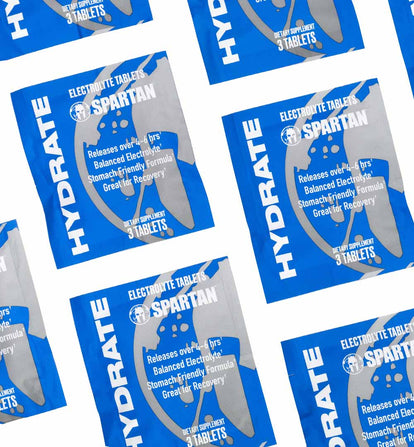3 Reasons Training Plateaus Occur (and How to Break Through Them)

If there were a list of frustrating things that are a part of the process of training, injuries are solidly at the top of the list — there’s no arguing that. But directly underneath injuries would be when your progress comes to a halt and you’ve hit a plateau. It happens. You could crush a new PR and then get stuck for weeks (or even months).
Related: Break Out of Plateaus With Gabe Snow and Kristina Centenari's Strength Program
We asked Spartan Director of Training Sam Stauffer and Spartan Master Coach Trevor Franklin for the reasons why plateaus happen and how to bust through them. Here's what they said.
1. Your Goal Is Unclear.
“One of the absolute biggest things that I see as a coach are people without clear goals,” Trevor says. “When you’re not clear on your goal, you’re sort of just doing a bunch of things, but they all don’t necessarily revolve around the goal."
Trevor’s advice: Lock down that goal and map it out for 30, 60, and 90 days.
Take the guesswork out of creating a training plan for yourself, download the Spartan FIT app and commit to one of ours.
2. Your Workouts Need Variety.
“If you’re feeling good but not seeing results, it might be time to start changing up simple variables, such as time under tension or the position of the load,” Sam says. “By focusing on these techniques, you're reinforcing crucial foundations of strength that will help you excel past your plateaus."
Sam’s advice: Try 4/2/1 or 4/1/1 time under tension. This means 4 seconds down, a 1 or 2 second pause, and 1 second up.
For more ways to add variety, check out these six important exercise variations. To integrate more of these variations into a training plan, commit to the Break the Mold program on the Spartan FIT app.
3. You’re Going Too Hard, Too Much, and Too Often.
“A lot of people think that going hard all of the time isn’t going to catch up to them, and they’re wrong,” Trevor says. “Lower-intensity days or active recovery days not only give your physical body a chance to recover, but your central nervous system too."
Related: Active Recovery Is No Joke. Get These 5 Rehab Essentials and Use Them Often.
Trevor’s advice: Make sure that you’re fueling up right — both before and after a workout — not getting dehydrated, and getting enough sleep. You may also need to look at how your workouts are split up in terms of intensity.
Start following a program that challenges you while also supporting recovery. Get started on the Spartan FIT app today!

